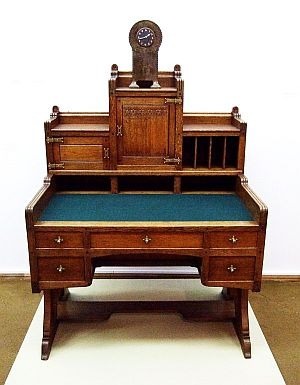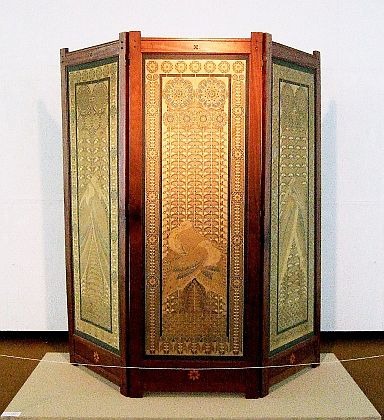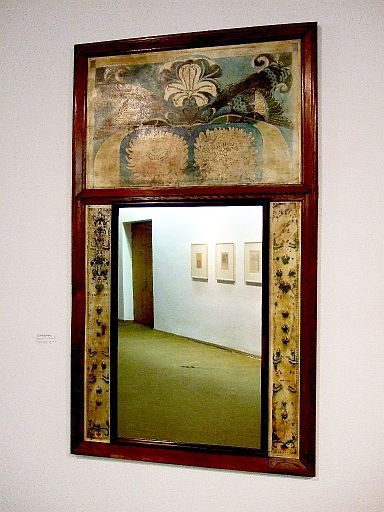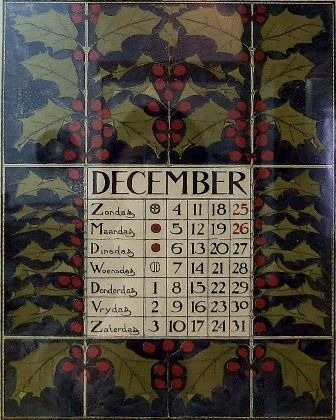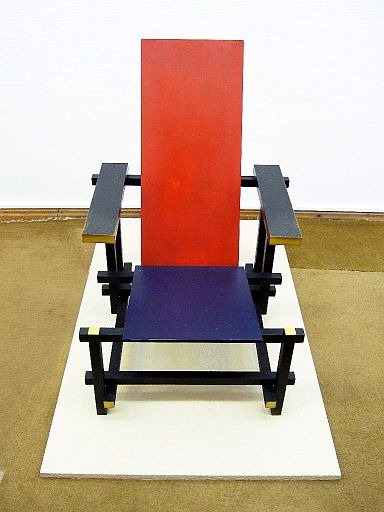ART NOUVEAU AND ART DECO IN THE NETHERLANDS: THROUGH THE COLLECTOR’S EYES 0
Kotryna Džilavjanaitė www.kamane.lt , 2008 06 30 Hendrik Petrus Berlage, desk, 1905; table clock, 1901
Christiaan Lebeau, threefold screen, 1905 (author of the frames - J. van den Bosch)
Carel Adolphe Lion Cachet, wall mirror, 1898
Theodorus Wilhelmus Nieuwenhuis, calendar page, 1898
H. T. Wijdeveld, cupboard, 1925
Hendrik Albertus van den Eijnde, clock, 1925
Gerrit Rietveld, "Red-blue chair", 1924 In brief: The exhibition “Art Nouveau and Art Deco in the Netherlands: 50 Design Years” will be open at M. Žilinskas Art Gallery for the entire summer. According to the Director of the National M.K.Čiurlionis Art Museum Osvaldas Daugelis, it is one of the most valuable foreign exhibitions ever presented at M. Žilinskas Gallery. The trend of Art Nouveau and Art Deco that emerged from it emphasises the importance of fine crafts, propagated aestheticism and stylistically united residential environment; refined forms, decorative expression, view stylisation is typical of works of these art trends. The owner of the collection, curator of Drente Museum Dr. Jan Jaap Heijo tells about unique Dutch artworks and their exceptional qualities in the interview presented in the article. According to J.J.Heijo, almost all exhibits belong to Drente Museum in Assen, and they are from his personal collection. The biggest number of items was purchased from artists’ offspring as well as other people who found out about the formed collection of the Dutch Art Nouveau and Art Deco styles. Presently the collection is formed of about 40 thousand items. Even though Art Nouveau and Art Deco are international styles, the Dutch creation stood out by original features. For instance, the wardrobe of Jacob Pieter van den Bosch, chair of Klaas van Leeuwen or Hendrik Petrus Berlage’s desk – the style of these pieces of furniture is very strict and austere: at the beginning of the 20th century a group of artists asserted that international Art Nouveau did not suit the Netherlands with the wavy lines as it was too easy-going and luxurious. Creating their artworks, Dutch artists chose a more ascetic expression and rejected needless decorations. This is the movement of constructivists or rationalists. Despite the influence of the strict style, the elegant and decorative Art Nouveau is admired in the Netherlands similarly. One of the examples is the exhibited screen with the frames created by J. van den Bosch and fabric – by Christiaanas Lebeau. As the majority of exhibited artworks are luxurious and expensive, the author gives a question whether there are some examples of mass production in the exhibition. According to the collector, such examples are covers of books, calendars, dishes, textile used in the daily life and wall tapestries. Despite the mass production, everything had to be performed in high quality. These ideas reached the Netherlands from the Arts&Crafts movement in England. Beauty had to be everywhere – this was their slogan.








